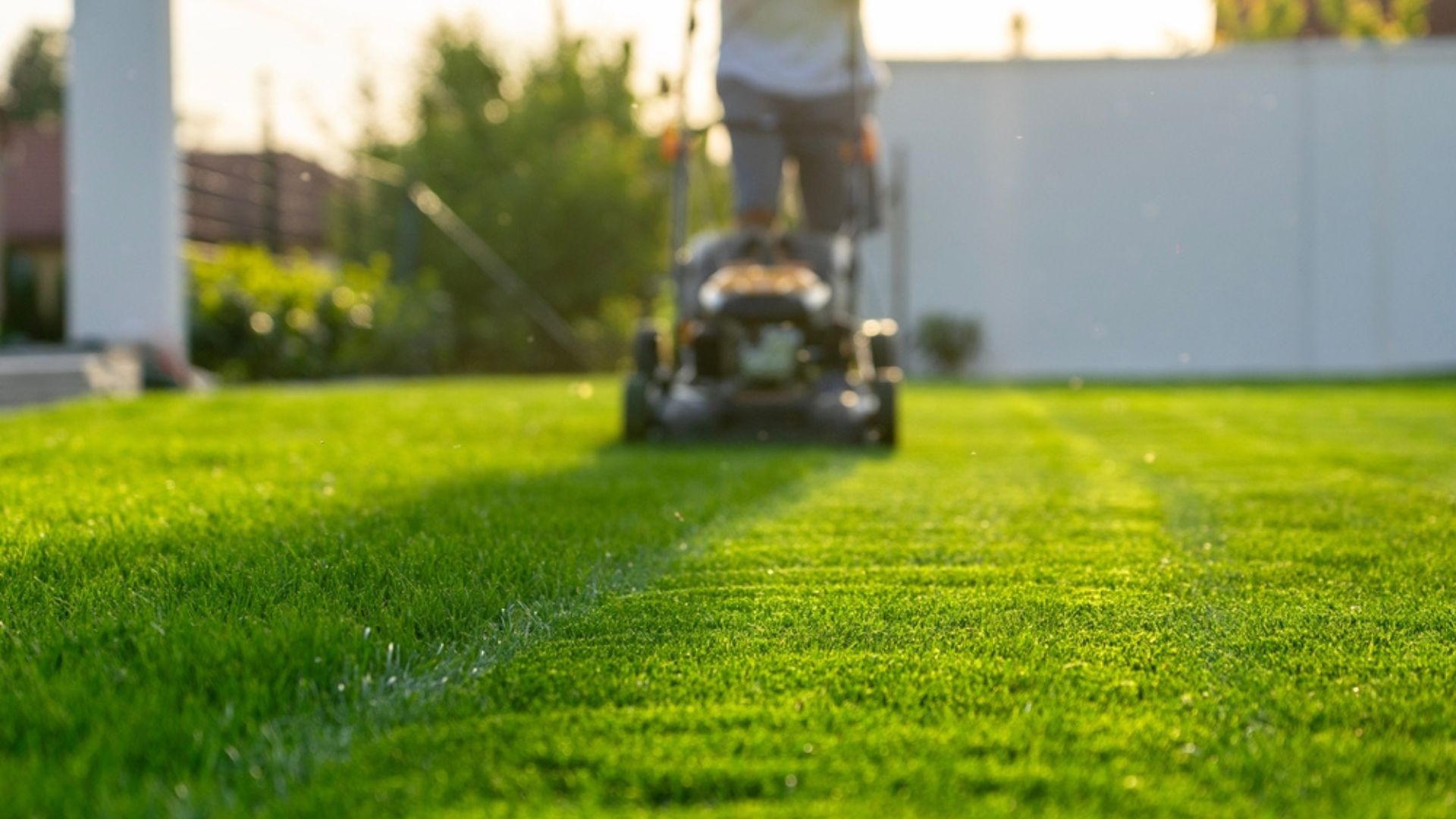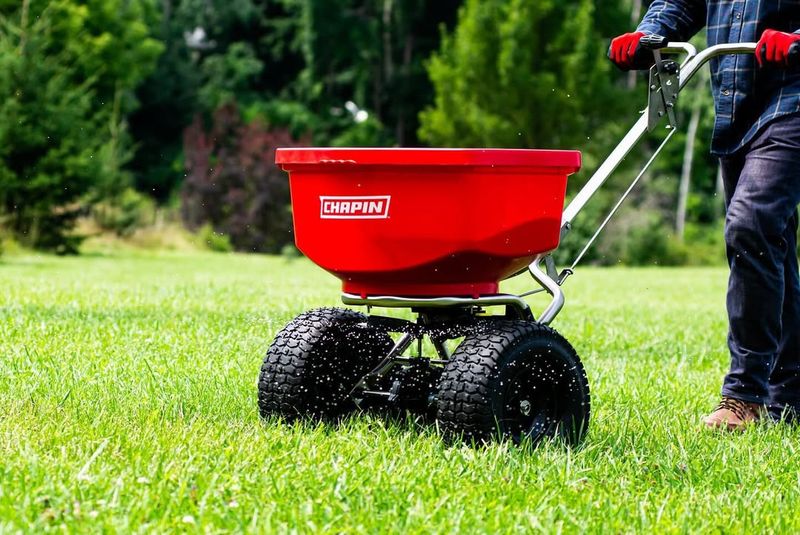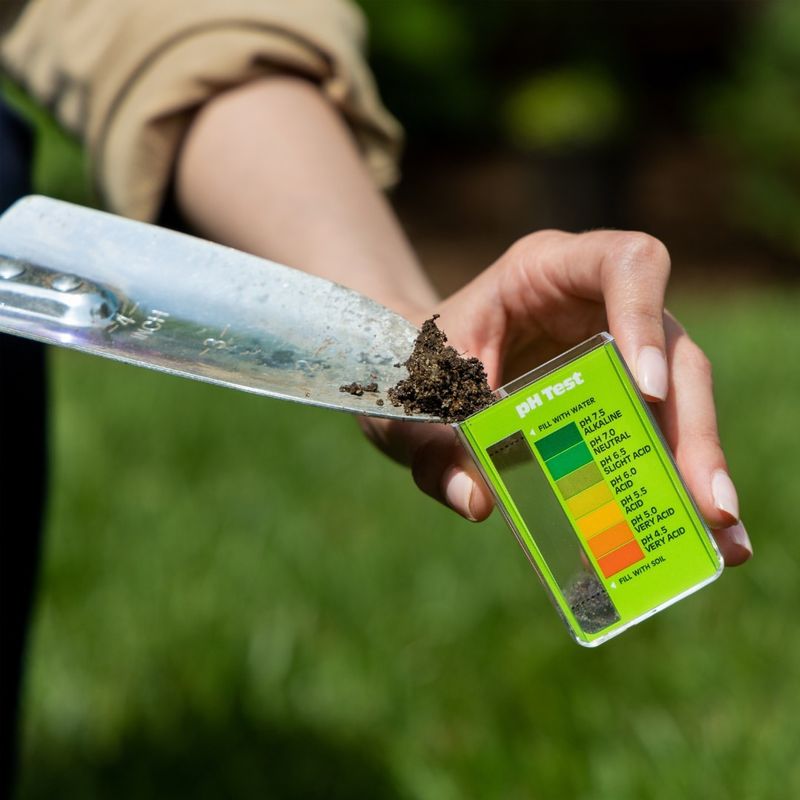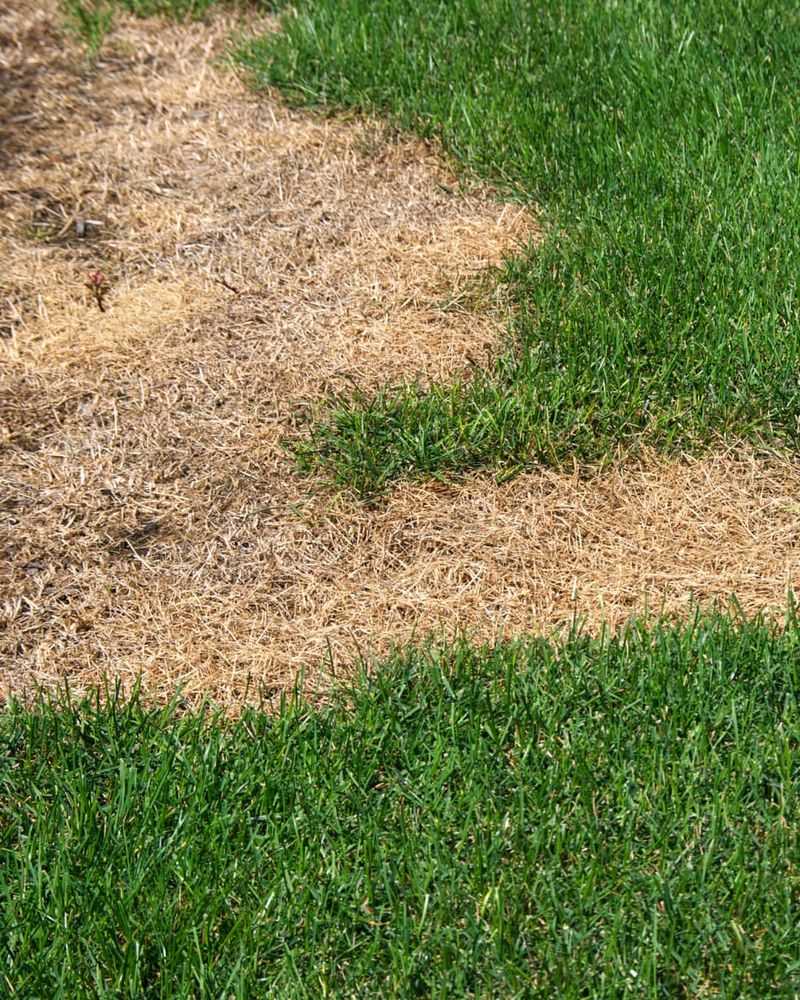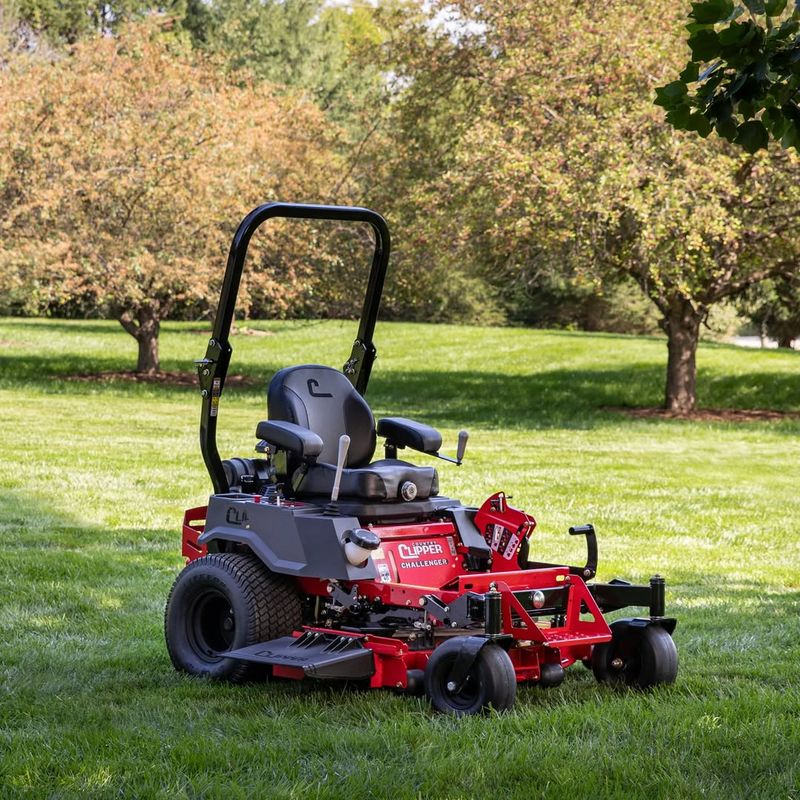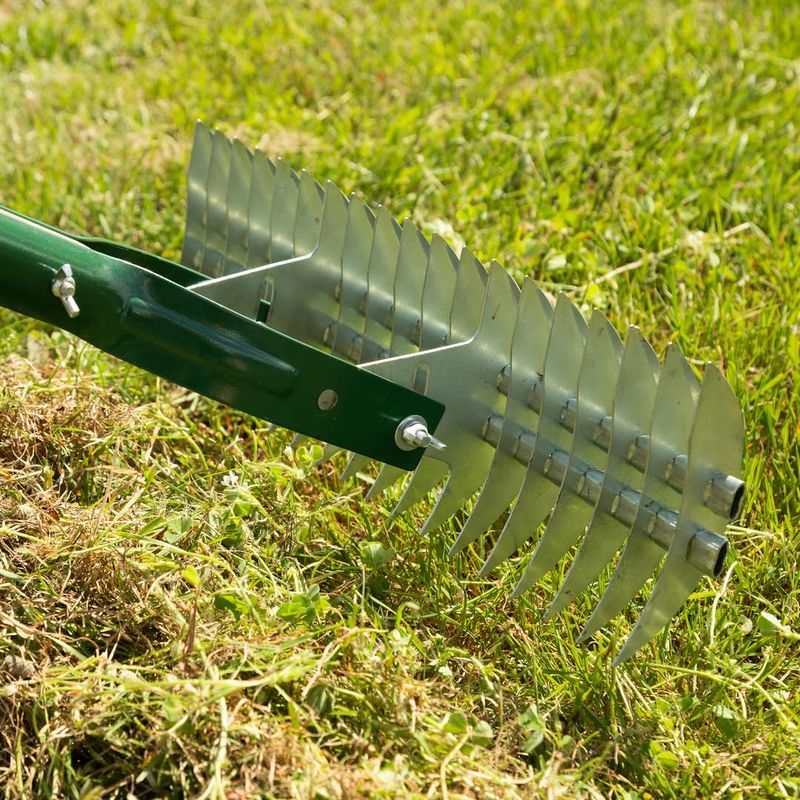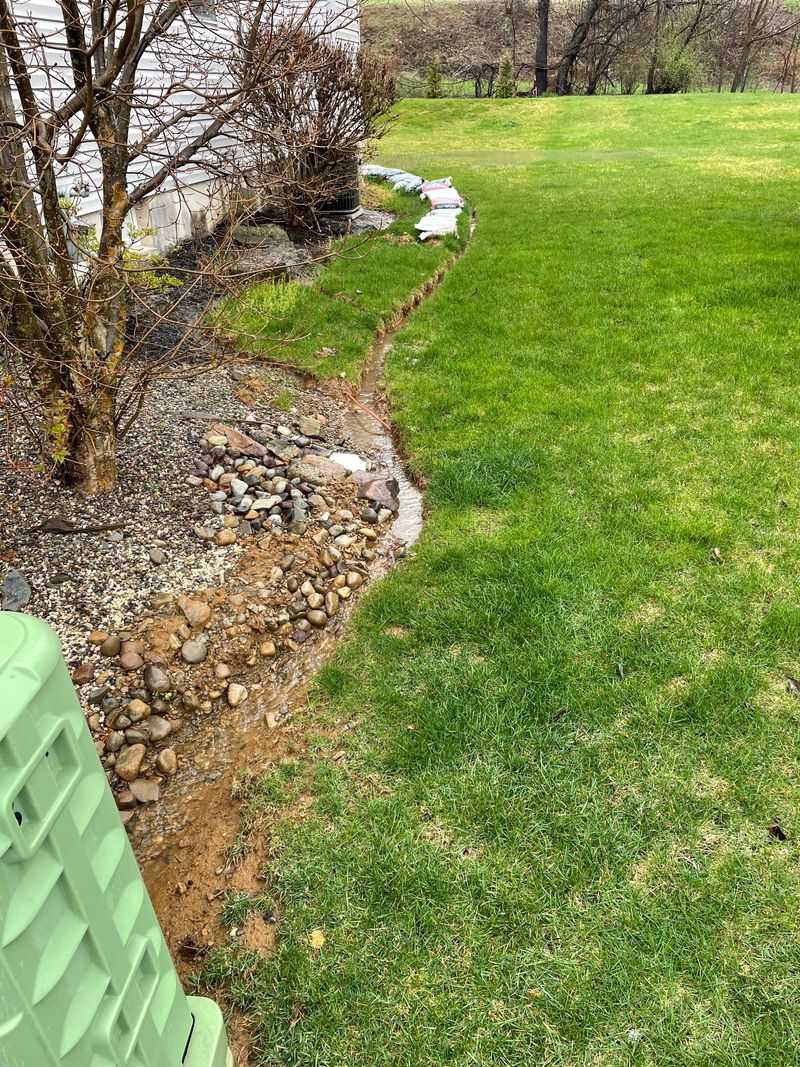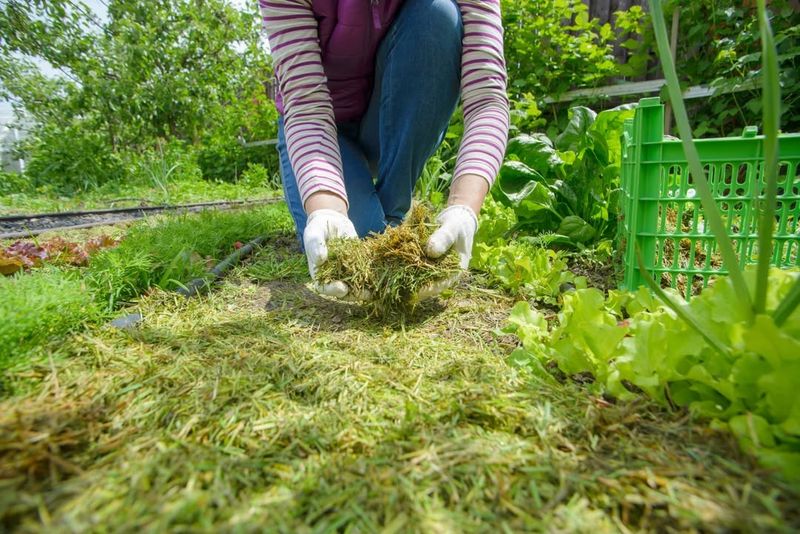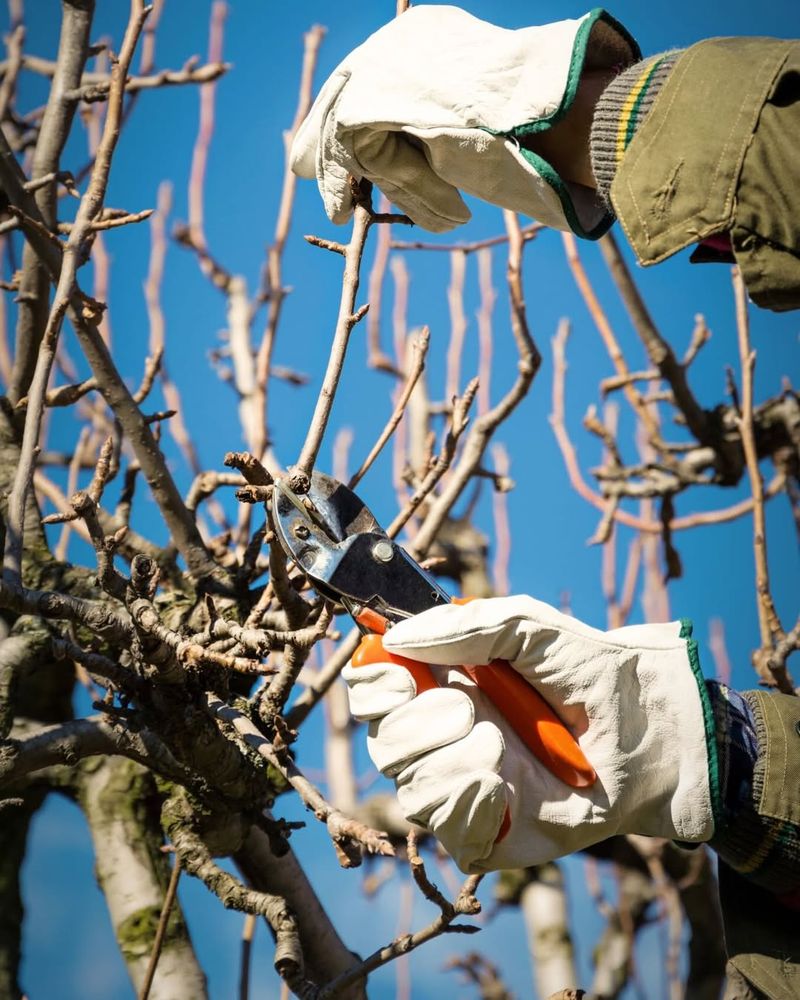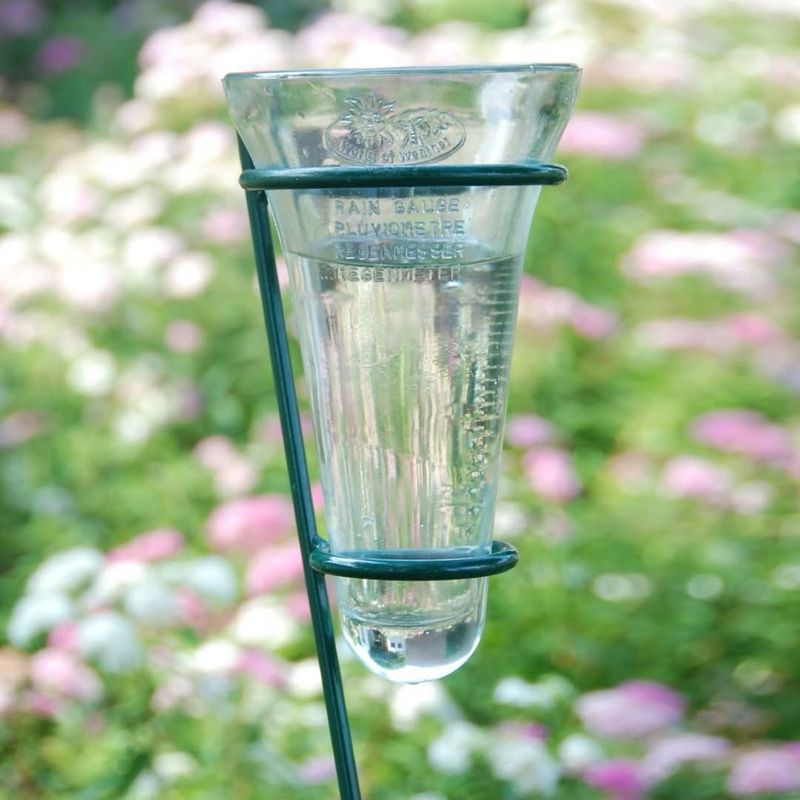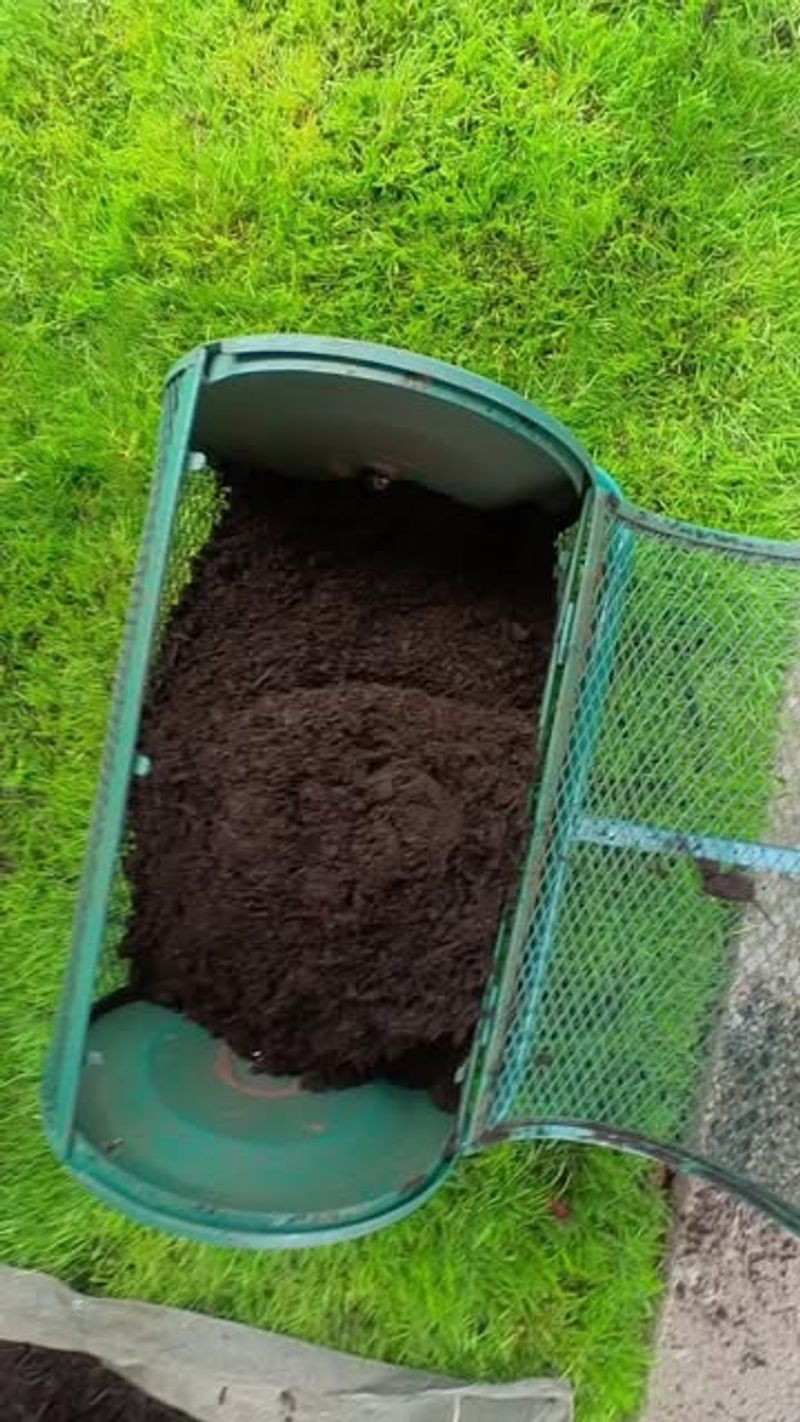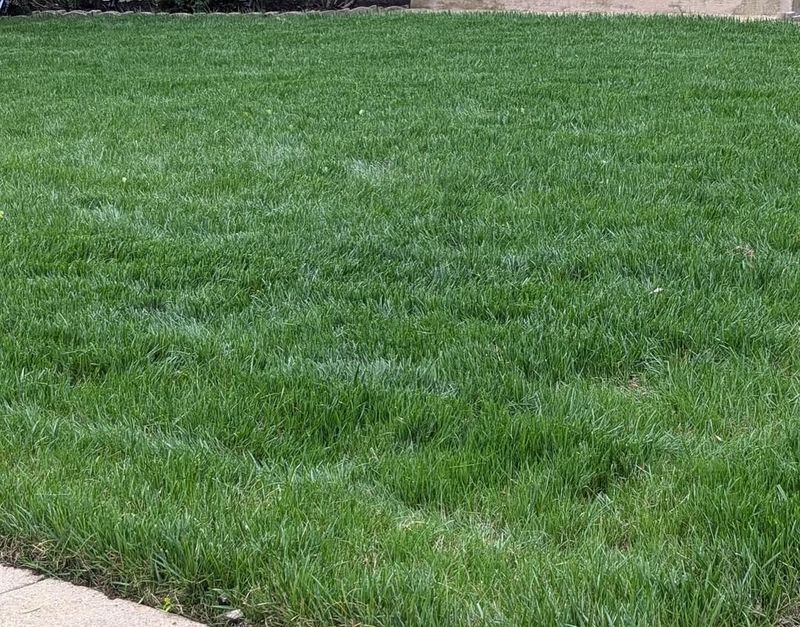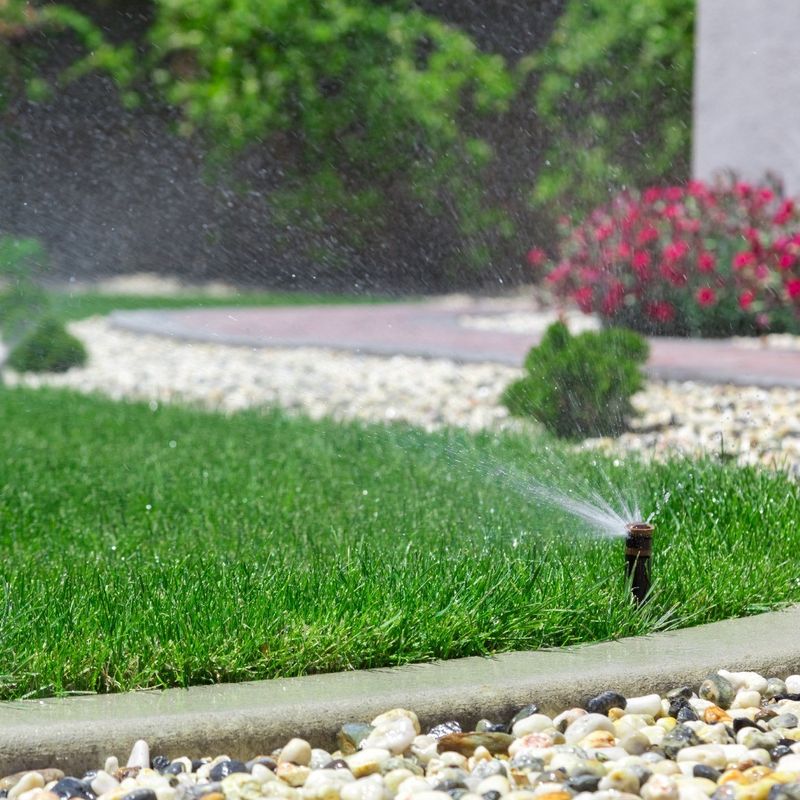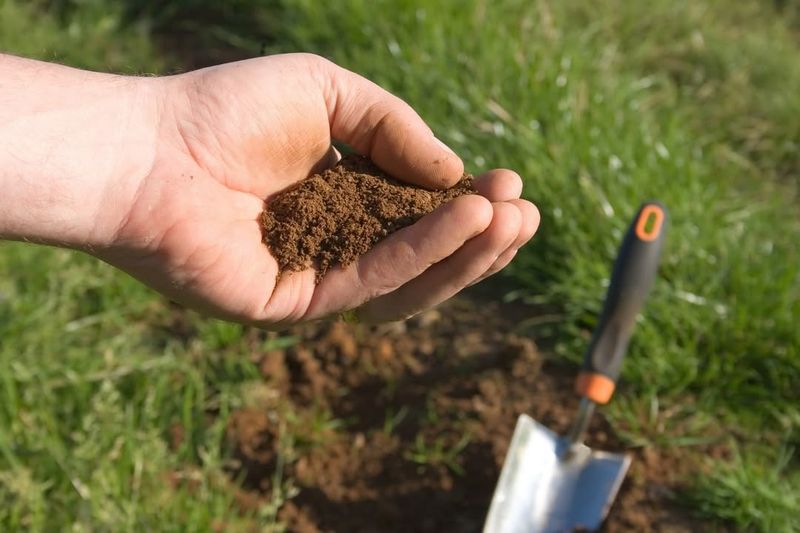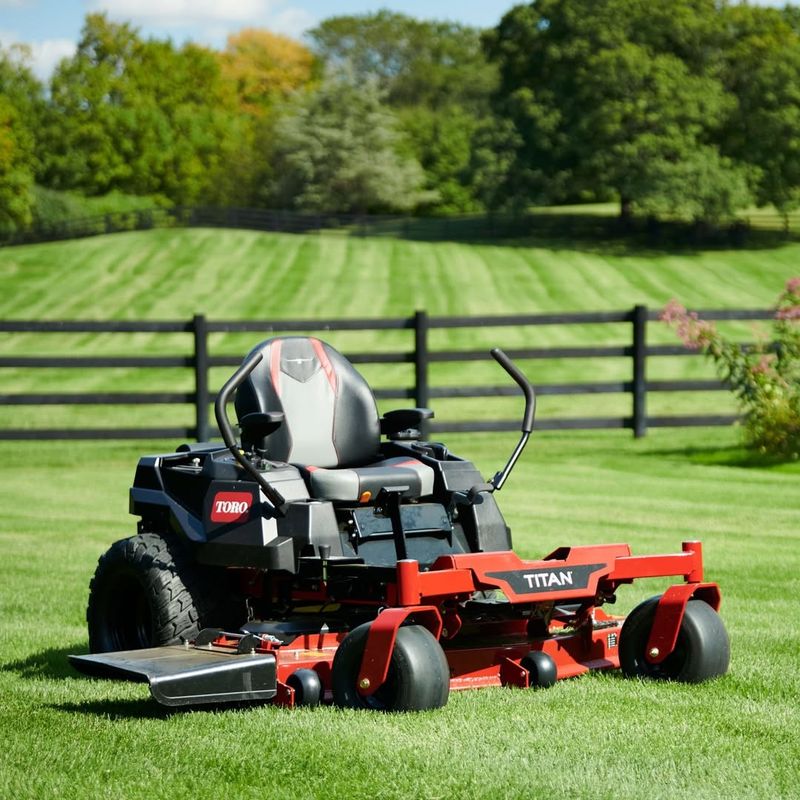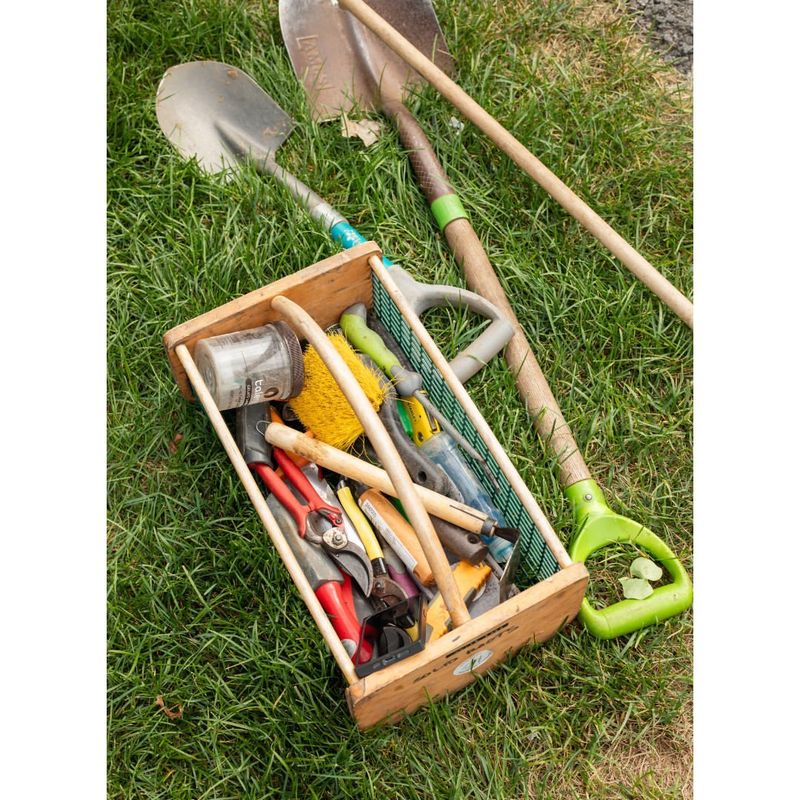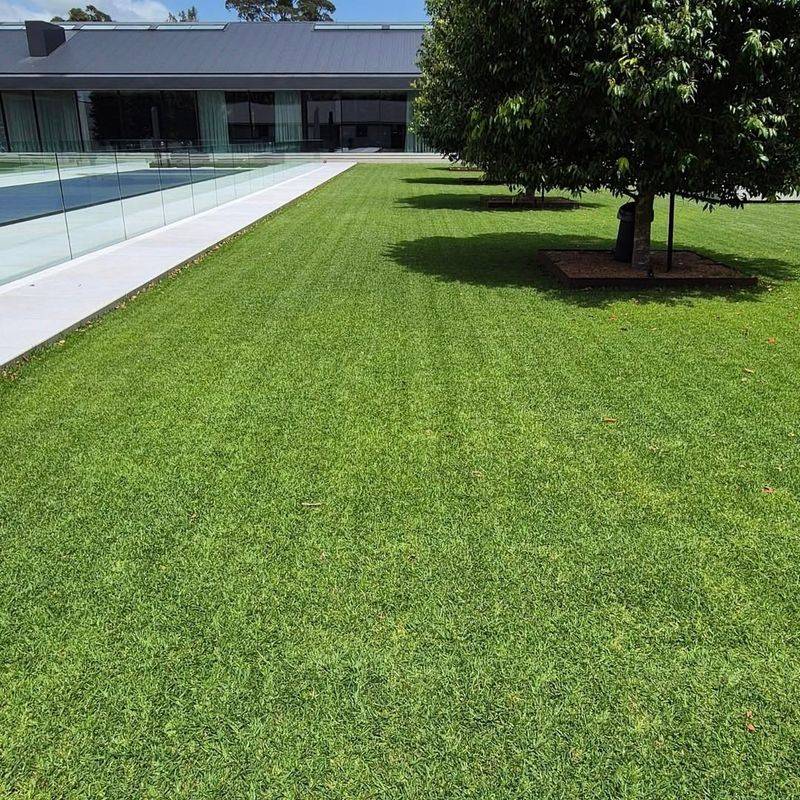April is the month your lawn wakes up, and it’s your job to make sure it starts the season strong. These 25 tips will help you refresh your grass, keep it green, and dodge the mistakes that leave lawns looking dry, patchy, or overrun with weeds. The right prep now means fewer headaches later—no fighting stubborn bare spots in July or battling crabgrass when you’d rather be relaxing.
Give your soil the nutrients it needs, tackle pests before they settle in, and keep your lawn looking fresh all season long. A little work now will set you up for a summer of soft, healthy grass under your feet.
1. Aerate Your Lawn
Puncturing your lawn’s surface can do wonders. Aeration allows air, water, and nutrients to penetrate deeper into the soil. This process involves creating small holes throughout your lawn. By doing so, you break up compacted soil and allow roots to grow deeply.
This is critical for a vibrant and resilient lawn. With proper aeration, your grass can better withstand heat and drought conditions. Aim to aerate in early spring for best results.
2. Apply Pre-Emergent Herbicides
Stopping weeds before they take hold is key. Pre-emergent herbicides prevent weed seeds from germinating. Effective for crabgrass and other annual weeds, this method should be applied before the soil temperature reaches 55°F.
Timing is crucial, so monitor local weather conditions. This application helps maintain a clean and weed-free lawn throughout the summer. Reapply as needed, according to product instructions.
3. Fertilize with a Balanced Mix
Nourish your lawn with the right balance of nutrients. A balanced fertilizer mix provides essential elements like nitrogen, phosphorus, and potassium. Each element plays a specific role in grass health and growth.
It’s best to fertilize in early spring to kickstart growth and repair winter damage. Follow package recommendations for your grass type to avoid over-fertilization. Regular feeding helps maintain a lush and green lawn.
4. Check Soil pH Levels
Understanding your soil’s acidity or alkalinity can make a difference. Proper pH levels ensure that nutrients are available to grass roots. Testing kits are readily available for home use. Most grasses thrive in neutral to slightly acidic soils.
Adjustments can be made with lime or sulfur, depending on needs. Knowing your soil’s pH helps tailor your lawn care plan effectively. Annual testing is recommended for optimal lawn health.
5. Overseed Bare Patches
Filling in those unsightly patches can be simple. Overseeding helps to thicken your lawn and improve its appearance. Choose a seed blend that matches your existing grass type. Overseeding is most effective when done after aeration.
This practice encourages new growth and repairs damaged areas. Watering is essential for seed germination, so keep the area moist. Regular maintenance ensures a full and vibrant lawn.
6. Adjust Your Mower Height
A simple tweak can protect your lawn. Setting your mower to the right height prevents stress on your grass. Taller grass shades soil and retains moisture. It also reduces weed growth by blocking sunlight.
Most experts recommend mowing at about three inches. This height supports root development and overall lawn health. Regular mowing at the correct height keeps your lawn looking its best.
7. Water Deeply and Infrequently
Rethink your watering strategy for better results. Deep, infrequent watering encourages roots to grow deeper into the soil. This makes your lawn more drought-resistant. Watering early in the morning minimizes evaporation and fungal diseases.
Aim for about one inch of water per week. Adjust based on weather and soil conditions. Consistent deep watering supports a healthy, green lawn throughout the hot months.
8. Rake and Remove Thatch
Clearing the way for growth starts here. Thatch is a layer of dead grass and roots that builds up over time. Too much thatch can block water and nutrients from reaching the soil. Raking in early spring helps remove this barrier.
Use a specialized dethatching rake for best results. This process improves air circulation and encourages healthy new growth. Regular dethatching promotes a resilient lawn.
9. Test Your Lawn’s Drainage
Poor drainage can spell trouble. Waterlogged lawns can lead to root rot and other issues. Testing involves observing how quickly water drains from a small hole. Slow drainage indicates compaction or other issues.
Addressing drainage problems improves overall lawn health. Solutions may include aeration, adding organic matter, or regrading. Early spring is an ideal time to assess and correct drainage problems.
10. Use Organic Lawn Care Products
Choosing the right products can make a difference. Organic lawn care emphasizes soil health and natural growth. These products reduce chemical exposure and support beneficial organisms. Options include organic fertilizers, pest control, and soil amendments.
Incorporating organic practices can improve lawn health without environmental impact. Transitioning to organic products requires patience but offers sustainable results.
11. Mulch with Grass Clippings
Recycle and benefit from what you already have. Grass clippings act as a natural mulch, returning nutrients to the soil. This practice helps retain moisture and suppress weeds. Mulching mowers make this process easy and effective.
Clippings should be spread evenly and not too thick. This sustainable approach reduces waste and supports lawn health. Regular mulching contributes to a thriving, green lawn.
12. Introduce Beneficial Insects
Nature’s allies can be your best friends. Beneficial insects help control pests naturally. Ladybugs, lacewings, and predatory beetles are effective options. These insects target common lawn pests such as aphids and caterpillars.
Creating a welcoming environment encourages their presence. Avoid chemical pesticides that harm beneficial insects. Cultivating a balanced ecosystem supports lawn health.
13. Prune Overhanging Trees
A little trimming goes a long way. Overhanging branches can block sunlight and hinder grass growth. Pruning allows more light and air to reach your lawn.
This promotes photosynthesis and overall health. Regular pruning also reduces competition for water and nutrients. Be mindful of tree health when cutting branches. Proper pruning techniques ensure safety and effectiveness.
14. Create a Mowing Schedule
Consistency is key for healthy grass. A mowing schedule keeps your lawn neat and reduces stress on grass blades. Mow frequently enough to maintain your desired height.
Avoid cutting more than one-third of the grass at a time. Sticking to a schedule helps prevent shock and encourages even growth. Adjust frequency during peak growing seasons. Regular mowing supports a uniform and attractive lawn.
15. Use a Rain Gauge
Knowing how much water your lawn receives helps fine-tune care. A rain gauge provides accurate measurements for weekly watering needs. This tool helps you adjust irrigation based on rainfall.
Too much or too little water can affect lawn health. Monitoring rainfall and supplementing with irrigation as needed ensures optimal moisture levels. Using a rain gauge supports informed lawn care decisions.
16. Edge Your Lawn for Definition
Clean lines make a difference. Edging defines the boundaries between your lawn and other areas. This practice enhances curb appeal and prevents grass from invading flower beds. Manual or power edgers can be used for this task.
Regular edging keeps your lawn looking tidy and well-maintained. Doing this before major lawn care activities supports clean and efficient work. Defined edges contribute to a polished landscape.
17. Apply Compost for Enrichment
Boost your soil with organic matter. Compost adds vital nutrients and improves soil structure. This amendment enhances water retention and supports root growth. Apply a thin layer of compost over your lawn in early spring.
Rake it evenly to ensure distribution without smothering grass. Composting is a sustainable practice that reduces landfill waste and enriches your lawn. Regular applications yield long-term benefits.
18. Monitor for Insect Damage
Tiny invaders can cause big problems. Regular monitoring helps detect insect damage early. Look for signs like chewed grass blades or yellowing patches. Identifying pests such as grubs or chinch bugs allows targeted treatments.
Early intervention prevents widespread damage. Use integrated pest management for environmentally friendly solutions. Regular inspections keep your lawn healthy and vibrant.
19. Select the Right Grass Type
Choosing the right grass is foundational. Climate, soil, and lawn use all influence grass selection. Different grass types offer unique benefits and drawbacks. Cool-season grasses thrive in northern regions, while warm-season grasses suit southern climates.
Research local recommendations for best results. Selecting the appropriate grass ensures your lawn’s long-term success. Proper selection supports a resilient and attractive lawn.
20. Install a Drip Irrigation System
Efficiency meets convenience in watering. Drip irrigation provides targeted moisture directly to roots. This system minimizes evaporation and conserves water. Ideal for lawns with flower beds or vegetable gardens, it delivers consistent care.
Installation requires planning but offers significant savings. Automated timers enhance efficiency and reduce effort. Drip irrigation supports a healthy lawn with minimal water waste.
21. Address Soil Compaction Issues
Loosening the ground paves the way for growth. Compacted soil restricts root expansion and water absorption. Aeration is the primary solution, using a core aerator to remove plugs of soil.
This process improves air exchange and promotes healthy root systems. Addressing compaction in the spring sets the stage for robust growth. Regular aeration supports a thriving lawn with improved resilience.
22. Rotate Lawn Care Equipment
Keeping your equipment in top shape makes a difference. Rotating tools ensures even wear and tear. Regular maintenance extends the life of your equipment. Clean and sharpen mower blades for efficient cutting.
Store tools properly to prevent rust and damage. Rotating and maintaining equipment ensures reliable performance. Well-maintained tools support efficient and effective lawn care.
23. Conduct a Soil Test
Knowing your soil’s composition guides improvement. Soil testing reveals nutrient levels and deficiencies. This information helps tailor fertilization and amendment plans. Testing kits are available for home use, offering detailed insights.
Understanding soil conditions allows informed decisions on supplements. Conduct regular tests to monitor changes and adjust care. Comprehensive soil knowledge supports a thriving lawn.
24. Create Wildlife-Friendly Habitats
Supporting nature enhances your outdoor space. Wildlife-friendly habitats attract beneficial creatures. Native plants provide food and shelter for birds, bees, and butterflies. Avoid chemicals that harm these species.
Balancing ornamental and native plants creates a diverse ecosystem. Wildlife-friendly practices enrich your lawn’s health. Encouraging nature contributes to a vibrant environment.
25. Manage Lawn Traffic Carefully
Protecting your lawn from excessive wear matters. High traffic can lead to compaction and damage. Designate walking paths to minimize stress on grass. Stepping stones or gravel paths enhance navigation.
Redirecting foot traffic preserves lawn health. Planning paths improves aesthetics and functionality. Managing traffic supports a robust and attractive lawn.
26. Plan for Seasonal Changes
Strategizing for the seasons ensures continuous care. Planning considers growth cycles and climate variations. Schedule specific activities like fertilization, aeration, and seeding. Anticipate seasonal challenges such as drought or pests.
Detailed planning supports proactive lawn care. Adjust plans based on observed changes and emerging needs. Effective planning fosters a thriving lawn year-round.
27. Utilize Companion Planting
Diverse plantings can offer mutual benefits. Companion planting supports pest control and growth. Certain plants repel insects or attract beneficial predators. Integrating flowers and herbs enhances biodiversity.
Companion planting strengthens garden productivity. Considering plant relationships enriches your lawn’s environment. Thoughtful plant combinations contribute to robust growth.
28. Invest in Quality Lawn Tools
Having the right tools makes tasks easier. Quality lawn tools ensure durability and effectiveness. Investing in reliable equipment saves time and effort. Consider ergonomic designs for comfort. High-quality tools deliver consistent performance.
Regular maintenance extends their lifespan. Investing wisely supports efficient lawn care. Well-equipped, you’re ready for any lawn challenge.
29. Introduce Ground Covers
Ground covers serve numerous roles in your lawn. They fill gaps, suppress weeds, and add texture. Low-growing plants like creeping thyme offer visual appeal. Ground covers reduce maintenance and support biodiversity.
Selecting suitable options complements your lawn’s needs. Ground covers enhance lawn aesthetics and functionality. Exploring ground cover options enriches your landscape.
30. Schedule Regular Lawn Evaluations
Assessment drives improvement. Regular lawn evaluations identify strengths and areas for change. Inspections guide decisions on fertilization, pest control, and more. Scheduling evaluations supports consistent care.
Detailed observations lead to informed adjustments. Regular checks promote a healthy and vibrant lawn. Evaluations ensure your lawn thrives season after season.
31. Prepare for Drought Conditions
Planning for dry spells protects your lawn. Drought-resistant grasses withstand low water conditions. Mulching and soil amendments improve moisture retention. Adjusting irrigation strategies conserves water.
Preparing for drought ensures lawn survival during heatwaves. Proactive measures support lawn health. Adapting to climate challenges sustains a resilient lawn.
32. Incorporate Vertical Gardening
Elevate your gardening game. Vertical gardening maximizes limited space. Walls and trellises offer growing opportunities. Herbs, vegetables, and flowers thrive vertically. Vertical gardening enhances visual appeal and functionality.
Incorporating vertical elements complements your lawn. This practice enriches garden diversity and interest. Vertical gardening elevates your landscape’s potential.

